Koji Amazake and Resistant Protein: Health Benefits
Aug 19,2021
Koji Amazake and Resistant Protein: Health Benefits
Aug 19,2021
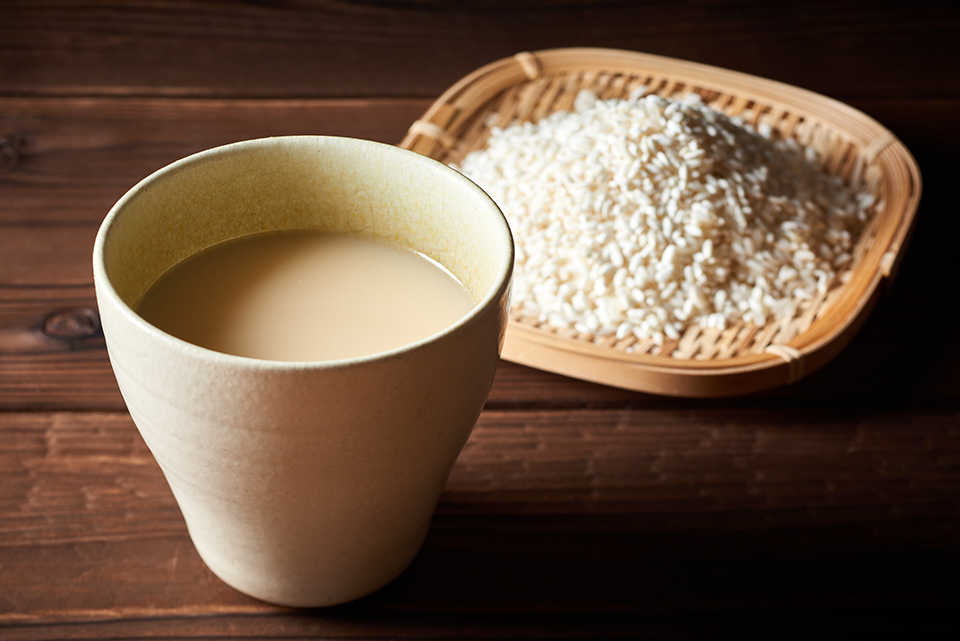

Gut health regimens and fermented foods have been attracting interest as people become more aware of the importance of self-treatment. They’re a means of developing a healthier immune system by keeping the bowels in good working order. A case in point is resistant protein. This stimulates the intestinal immune cells that help keep you healthy. It also activates the intestinal flora (as the bacteria in your gut are called from their flower-like appearance) by giving them something to feed on.
We asked Professor Ozeki Kenji of Kanazawa Institute of Technology about the amazing power of resistant protein, which also happens to be contained in the sweet fermented beverage koji amazake. When’s the best time to drink koji amazake as a source of resistant protein? What foods does it go best with? Read on and you’ll find the answers, along with a few recommended recipes!
Resistant protein is becoming a hot topic these days, but what exactly is it?

Professor Ozeki Kenji of the Department of Applied Bioscience, College of Bioscience and Chemistry, Kanazawa Institute of Technology
“Resistant protein is protein that’s not easily broken down in the stomach. Normally, protein is broken down in the stomach into peptides, which are then converted to amino acids and absorbed by the small intestine. But resistant protein reaches the small intestine without being broken down. It’s known to offer numerous benefits. It has three main advantages.”
• It’s a healthy way to lower cholesterol.
When you eat something, resistant protein catches the fat and oil it contains in the small intestine, wraps itself around them, and carries them out of the body. It can thus potentially lower your cholesterol and prevent you from gaining weight.
• It improves the intestinal environment.
To activate intestinal bacteria, it’s important eat plenty of soluble fiber, which reaches the large intestine without being absorbed by the small intestine. Resistant protein acts similarly to soluble fiber in that it likewise improves the intestinal environment. And improving the intestinal environment makes you regular.
• It promotes immunity, leading to better health.
Sixty to seventy percent the human body’s immune cells are in the gut. Ingesting resistant protein turbocharges lactic acid bacteria, which in turn stimulate your immune cells. That’s the proper way to boost immunity.
Resistant protein, then, can deliver a host of benefits. So what foods are a good source of it?
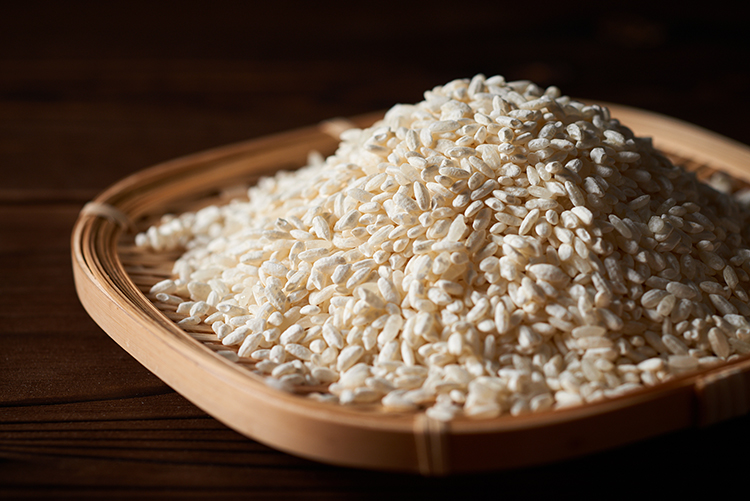
“Resistant protein first became a recognized concept around the year 2000. Scientists discovered that some of the protein contained in buckwheat behaved similarly to fiber in that it wasn’t easily digested. Attention then focused on how it acted.”
Other foods like soybeans, rice, freeze-dried tofu, and sake lees were subsequently found to contain resistant protein as well. Further, a joint study by Marukome and Professor Tachi Hiroshi of the Junior College of Tokyo University of Agriculture revealed its presence in miso. Why then has Professor Ozeki zeroed in on koji amazake?
“I’ve worked on researching and developing technologies for producing high-value-added substances like alpha-ethyl-D-glucoside (α-EG) and resistant protein from food waste. At one point, I turned my attention to the health benefits of koji amazake—the IV you drink, as it’s been nicknamed. Experience suggests that koji amazake can deliver benefits like controlling weight, keeping your gut in good working order, and promoting regular bowel movements. These benefits are exactly those observed in resistant protein. So I conducted an experiment analyzing the resistant protein content of amazake sold in stores.
“As a result, I detected resistant protein in all the commercially available amazake products surveyed. What’s more, it was present in large enough quantities to be effective. Amazake also contains large amounts of α-EG, which increases moisture levels in the skin. So you can expect it to give you beautiful skin.”
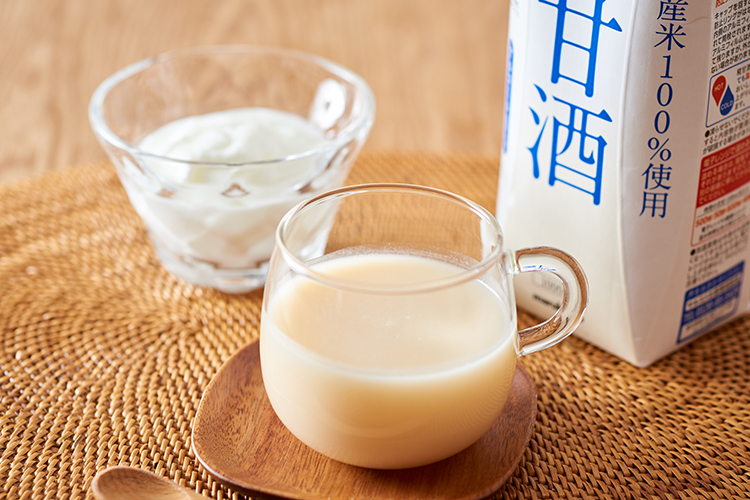
If you’re looking for a simple source of resistant protein, koji amazake is the answer. It can be drunk as it is without any preparation. Alcohol-free koji amazake made from rice malt using fermentation technology is a great way for anyone—from small children to expectant mothers and the elderly—to supplement resistant protein whenever they feel like it.
We asked Professor Ozeki the best time of day to drink koji amazake.
“The nutrients in koji amazake are already broken down into their smallest components: carbohydrates into glucose and protein into amino acids. They can thus be absorbed by the body without the help of digestive enzymes, which is a big plus. Koji amazake is instantly converted to energy and boosts metabolism, leading to better health. So I’d recommend you drink it in the morning.
“Koji amazake also contains peptides, a compound involved in regulation of blood pressure. Having a glassful after breakfast should help keep your blood pressure down. Koji amazake also adsorbs oils and fats and expels them from the body. So if you’ve eaten a large portion of greasy food such as a deep-fried dish, it’s a good idea to drink koji amazake afterwards.”
Even on its own, then, koji amazake is an effective source of resistant protein. But are there any foods that work in synergy when eaten with it?
“The best thing to eat with koji amazake is yogurt. The beneficial bacteria in yogurt are good for your circulation. You can also count on them to work away on your immune cells, which keep you healthy. We know that pouring a small amount of koji amazake on yogurt causes the beneficial bacteria in it to multiply.”
Next, here are two recommended recipes from Marukome made with koji amazake and yogurt.
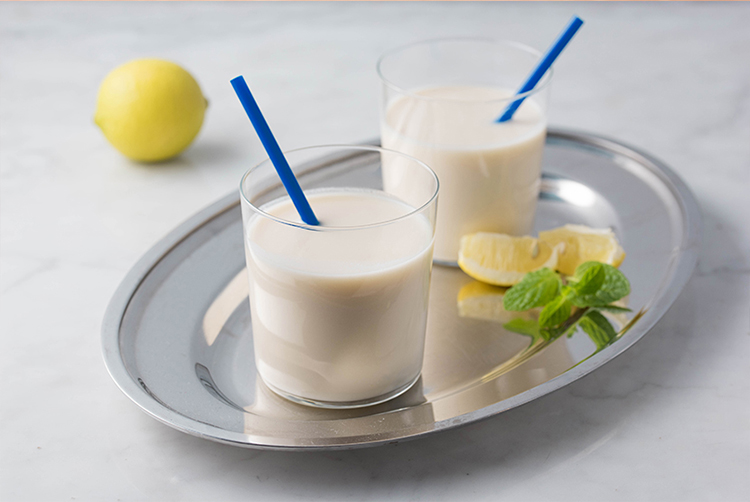
Koji amazake yogurt drink, which can be enjoyed just like lassi, is the perfect summer beverage. The sweetness of koji amazake goes exquisitely with yogurt! The smooth taste with its refreshing tang of lemon is addictive.
Koji amazake yogurt drink (in Japanese)
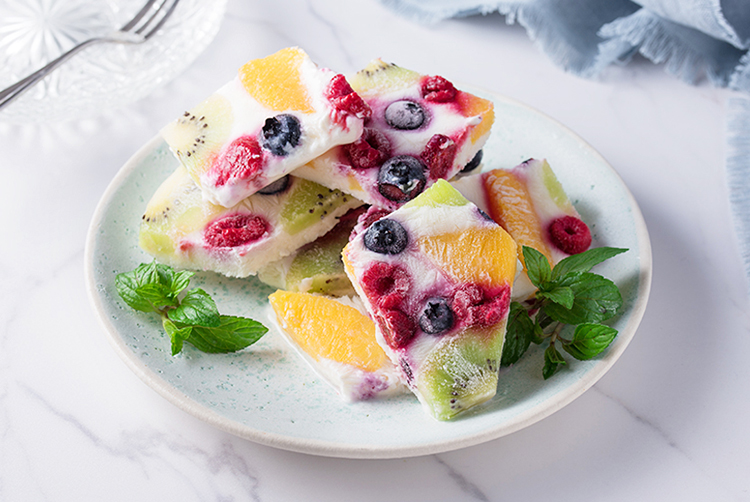
Yogurt bark is a frozen dessert made with generous amounts of fruit and yogurt. It’s a delight to the eyes as well as the tastebuds, and adding koji amazake transforms it into a rich yet refreshing treat. Try it for a snack on a hot day.
Koji amazake yogurt bark (in Japanese)
Resistant protein has potential beauty and health benefits, and a single cup of koji amazake is all you need to get your daily dose. Because this type of protein doesn’t lose its beneficial properties when heated, it can be enjoyed in many different forms, such as the two recipes featured here. So why not make it part of your daily diet?

Ozeki Kenji had been Professor of Applied Bioscience in the College of Bioscience and Chemistry of Kanazawa Institute of Technology since 2005. Before that, he worked in the R&D lab of Ozeki Corporation conducting a wide range of research on such things as the koji mold. He hopes that traditional Japanese sake made with koji mold will regain the pride of place it once held among alcoholic beverages in Japan. His drink of choice with dinner is, needless to say, sake.